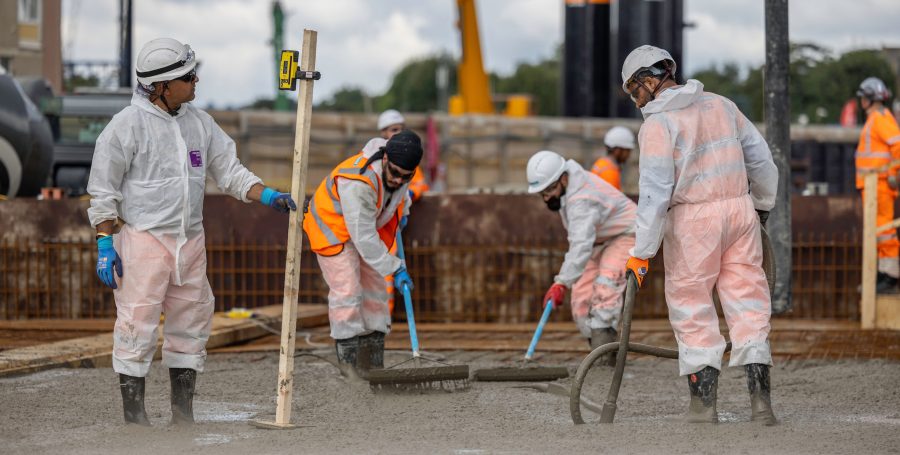
Environment
We’ve proven that technology can help lower emissions in construction, as HS2 sets new standards in UK civil engineering. Reducing the CO2 created during the construction phase has further benefits of improving local air quality and reducing costs.
HS2 has up to 350 construction sites across its programme and we have trialled a mixture of physical and digital solutions to reduce our impact on the environment. These include the use of AI to optimise use and cost of materials, the application of zero-emission renewable energy and low-carbon concrete.
Digital concrete testing
VERIFI® is a pioneering technology that enables real-time monitoring, measurement, and management of fresh concrete properties during transportation.
By utilising on-truck sensors, the concrete truck-mixer tracks itself to the point of delivery, tests itself prior to discharge and auto generates pour records for quality assurance purposes.
One of the key benefits of this system is the elimination of concrete waste, which would have been produced from manual sampling and testing, reducing carbon.
Low carbon concrete
HS2 contractors in London have begun using a new low carbon concrete product that provides a reduction of 42% in CO2 in comparison to standard concrete.
In addition, the remaining carbon emissions from using the concrete are offset to provide a CarbonNeutral® product, in accordance with The CarbonNeutral Protocol.
They are offset through investing in projects that physically remove CO2 from the atmosphere where possible, such as planting more trees or protecting against deforestation.
Renewable energy
Hollow tube piles have been bored up to 25 metres into the ground as a part of a site office’s foundations. Pipes carrying cold flowing water run through each pile cylinder.
As the ground’s heat warms the standing water in the cylinders, heat is transferred to the pipes and carried to the surface to supply the building’s heating system and hot water.
In a novel twist, the technology can be reversed in the summer to be used like air conditioning to cool the building by transferring heat back into the ground.
Diesel-free construction
In early 2022 we shared our aim to be net-zero from 2035, with the target of achieving our first diesel-free construction site in 2022, and all construction sites being diesel-free by 2029. By May 2022, Canterbury Road Vent Shaft site in South Kilburn became the first of our sites to become diesel-free.
Innovations on this site include one of the UK’s first 160 tonne emissions-free fully electric crawler cranes; the use of biofuels (Hydrogenated Vegetable Oil) to power plant and machinery on site; an electric compressor; and access to mains power on a 100% renewable energy tariff.
Using AI to reduce carbon
Building information modelling (BIM) processes can be automated using AI so that different design options can be simulated using different types and quantities of construction materials.
This means carbon emissions and environmental impacts of construction can be visualised, measured and compared, resulting in the design of a more environmentally-friendly solution.

Slide 1 of 5: The UK’s largest pour of environmentally friendly concrete at HS2 Euston in London (1/2)

Slide 2 of 5: The UK’s largest pour of environmentally friendly concrete at HS2 Euston in London (2/2)

Slide 3 of 5: Hollow tube piles have been bored up to 25 metres into the ground as a part of a site office's foundations to supply the building's heating system and hot water (1/2)

Slide 4 of 5: Hollow tube piles have been bored up to 25 metres into the ground as a part of a site office's foundations to supply the building's heating system and hot water (2/2)

Slide 5 of 5: HS2 Minister Andrew Stephenson and SCS Electric Crane Operator Leon Sobers